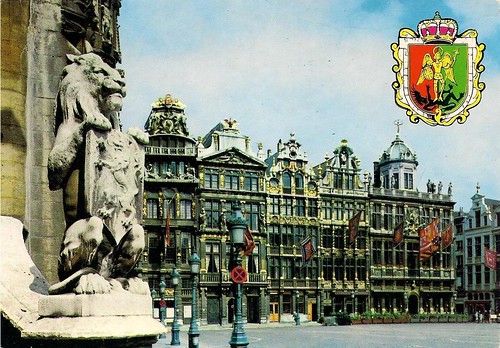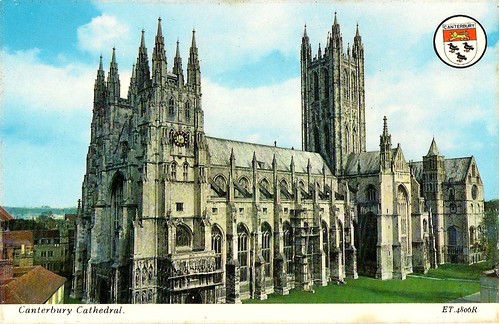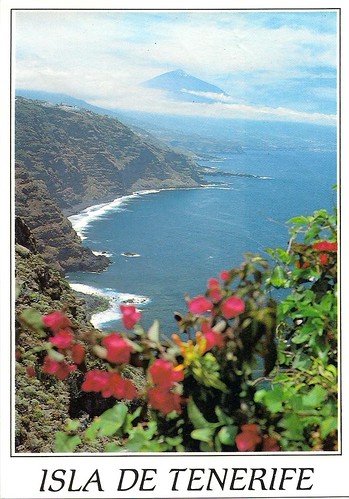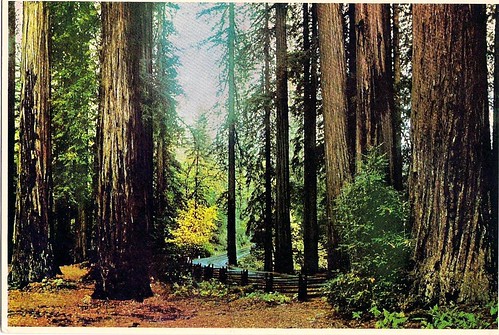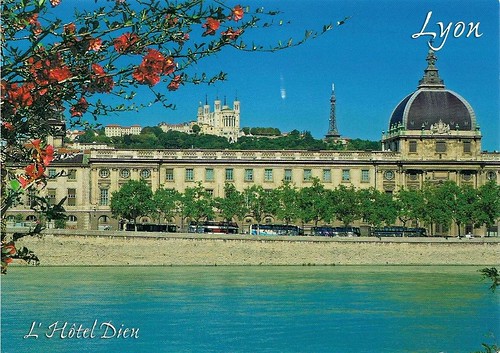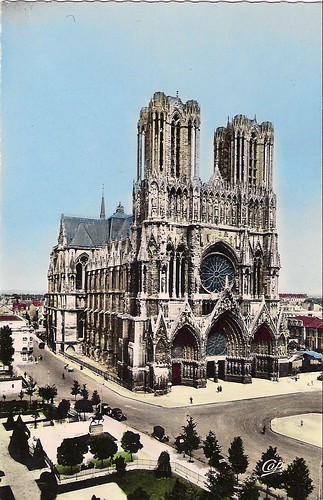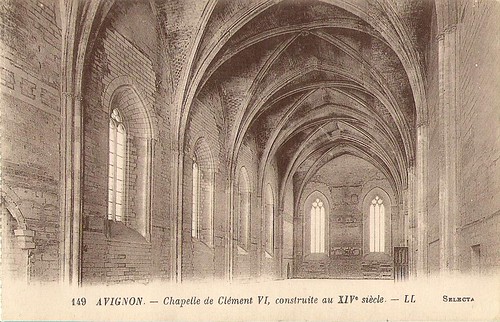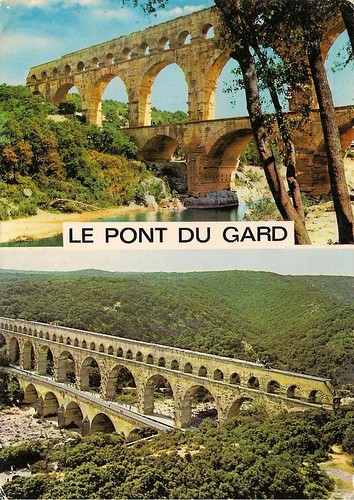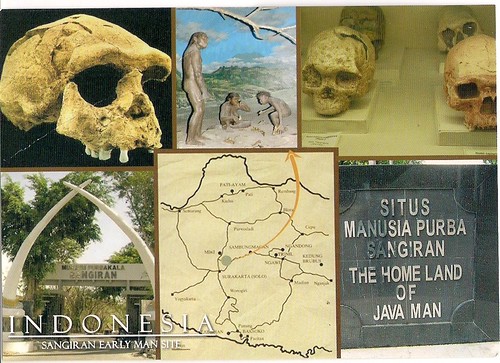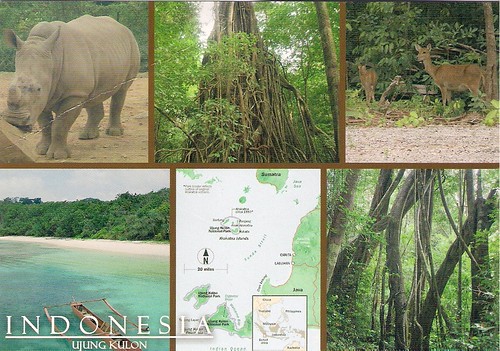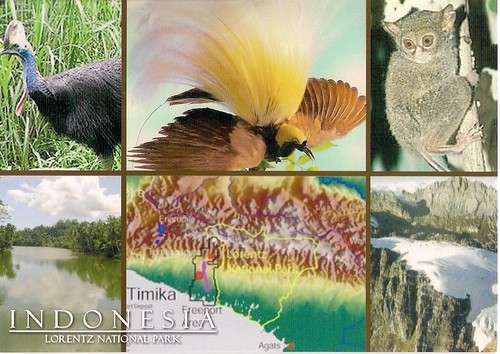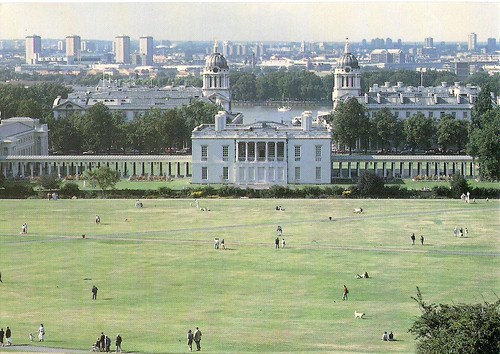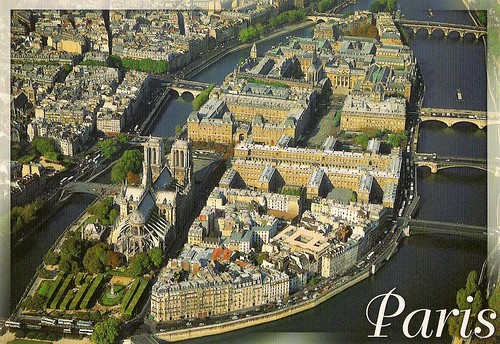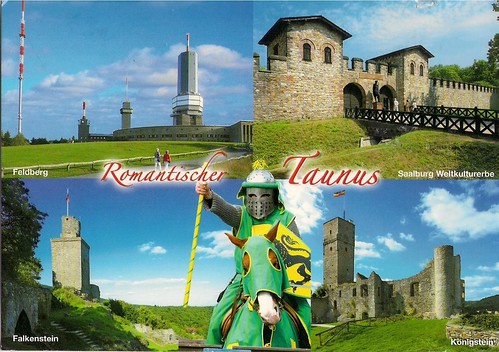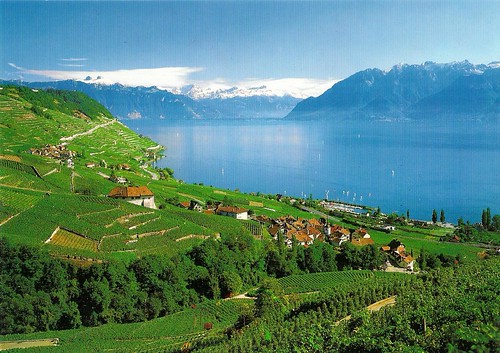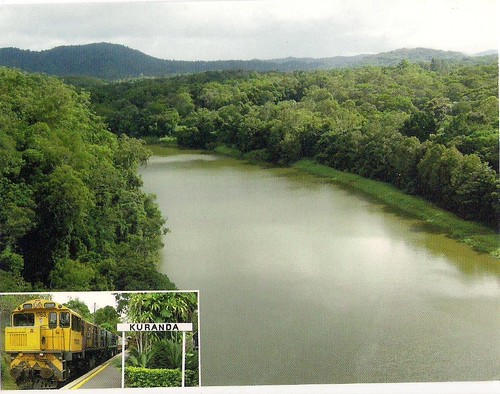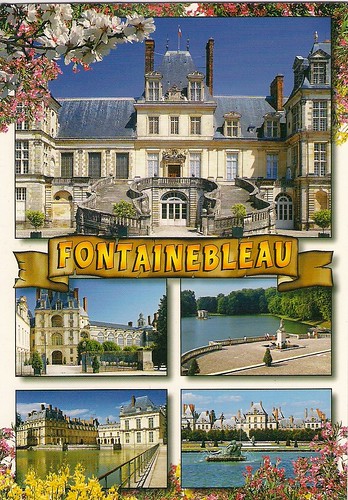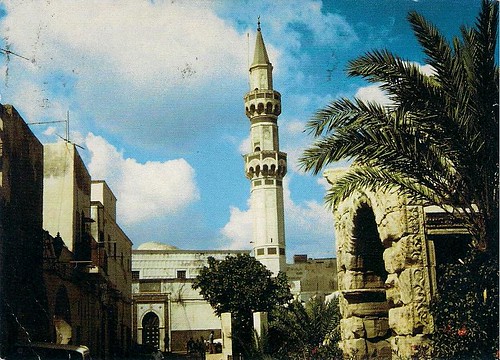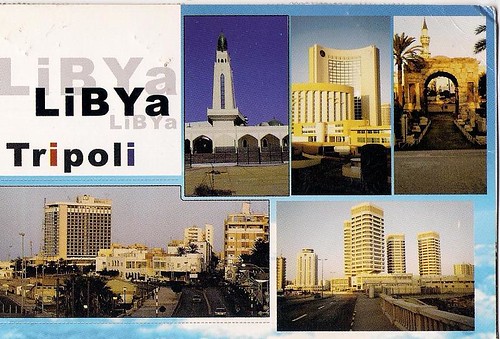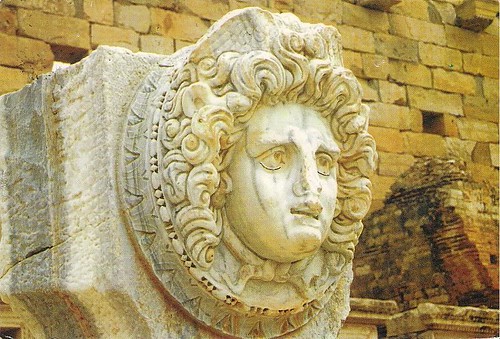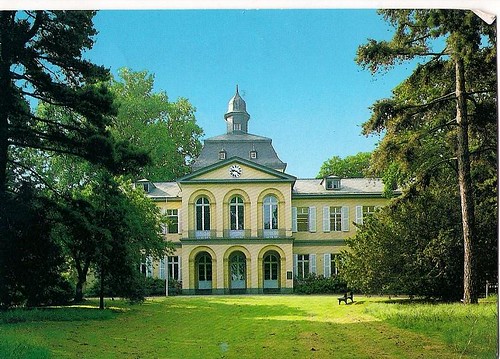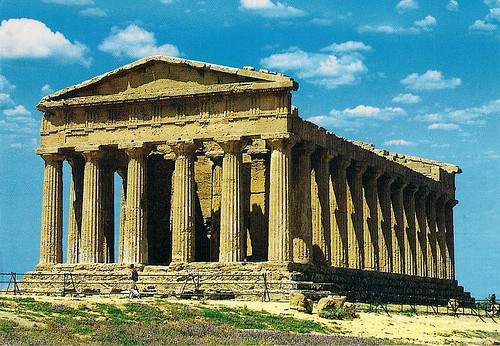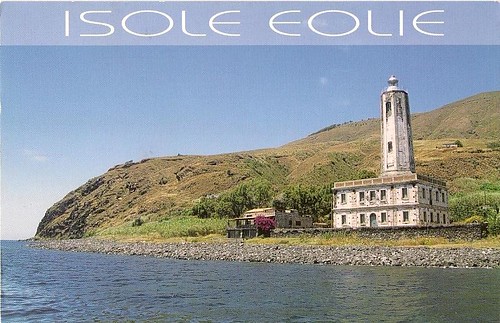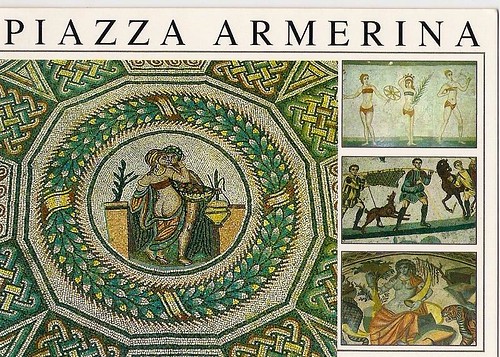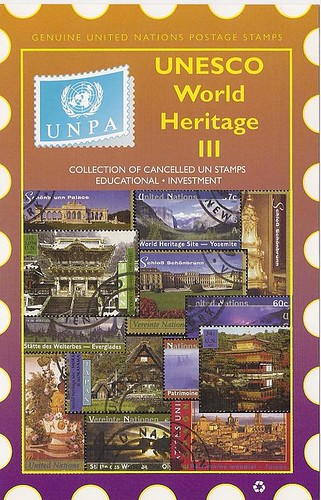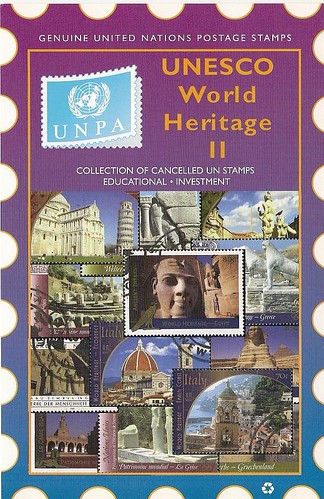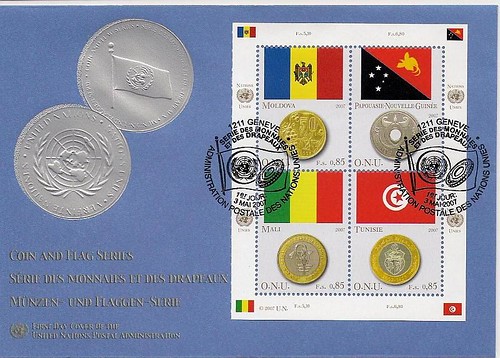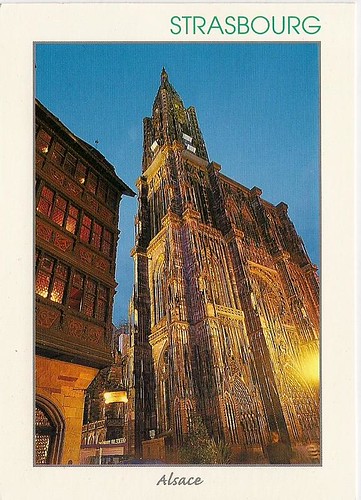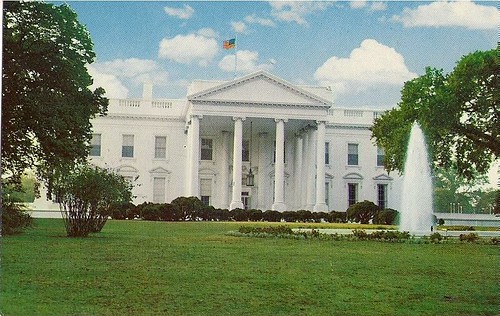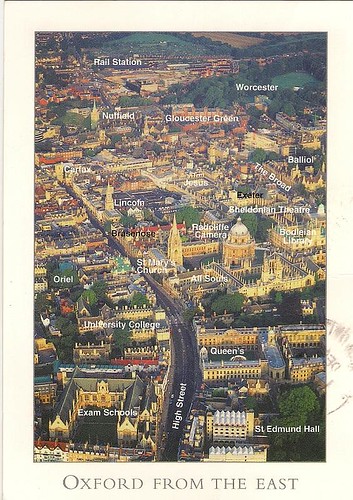Tuesday, December 22, 2009
Changdeokgung , Korea
Changdeokgung, also known as Changdeokgung Palace or Changdeok Palace, is set within a large park in Jongno-gu, Seoul, South Korea. It is one of the "Five Grand Palaces" built by the kings of the Joseon Dynasty and because of its location east of Gyeongbok Palace, Changdeokgung, with Changgyeongung, is also referred to as the East Palace. The literal meaning of Changdeokgung is "Palace of Prospering Virtue".
Changdeokgung was the most favored palace of many princes of the Joseon Dynasty and retained many elements dating from the Three Kingdoms of Korea period that were not incorporated in the more contemporary Gyeongbokgung. One such element is the fact that the buildings of Changdeokgung blend with the topography of the site instead of imposing upon nature.
Changdeokgung, like the other Five Grand Palaces in Seoul, was heavily destroyed during the Japanese occupation of Korea. Currently, only 30% of the Palace structures remain.
Changdeokgung was added to the UNESCO World Heritage List in 1997.
Budapest, Hungary

Hungary-2, originally uploaded by Abhishek's Received Postcards.
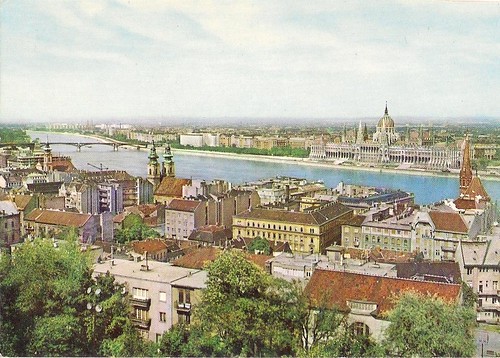
Hungary-3, originally uploaded by Abhishek's Received Postcards.
Budapest is the capital of Hungary.[1] As the largest city of Hungary, it serves as the country's principal political, cultural, commercial, industrial, and transportation center and is considered an important hub in Central Europe. Budapest became a single city occupying both banks of the river Danube with a unification on 17 November 1873 of right (west)-bank Buda and Óbuda with left (east)-bank Pest.
In 1987, Buda Castle and the banks of the Danube were included in the UNESCO list of World Heritage Sites.
Grand-Place, Brussels, Belgium
The Grote Markt or Grand Place is the central square of Brussels. It is surrounded by guildhalls, the city's Town Hall, and the Breadhouse. The square is the most important tourist destination and most memorable landmark in Brussels, along with the Atomium and Manneken Pis. It measures 68 by 110 metres (220 by 360 ft), and it is a UNESCO World Heritage Site.
Every two years in August, an enormous "flower carpet" is set up in the Grand Place for a few days. A million colourful begonias are set up in patterns, and the display covers a full 24 by 77 metres (79 by 250 ft), for area total of 1,800 square metres (19,000 sq ft). The first flower carpet was made in 1971, and due to its popularity, the tradition continued, with the flower carpet attracting a large number of tourists
Plantin-Moretus Museum, Antwerp, Belgium
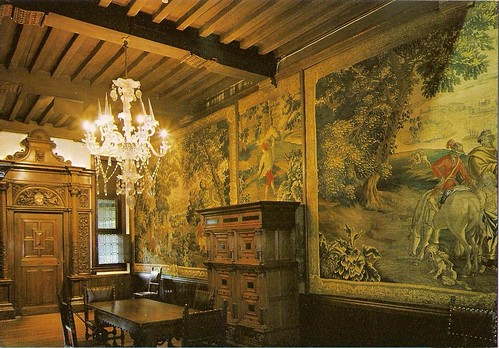
Belgium-9, originally uploaded by Abhishek's Received Postcards.
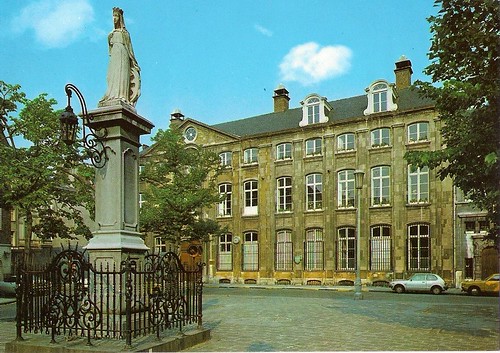
Belgium-10, originally uploaded by Abhishek's Received Postcards.
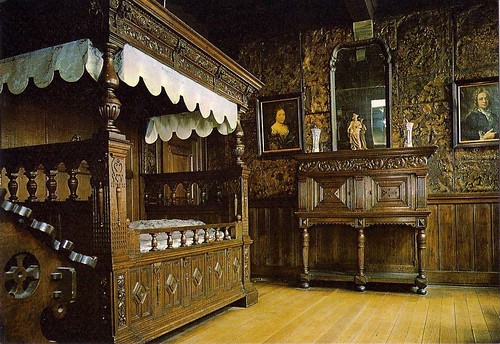
Belgium-11, originally uploaded by Abhishek's Received Postcards.
The Plantin-Moretus Museum is a museum in Antwerp, Belgium honouring the famous printers Christoffel Plantijn and Jan Moretus. It is located in their former residence and printing establishment, Plantin Press, at the Friday Market.
This postcard shows the Drawing Room of the Wall Tapestries.
Canterbury Cathedral, United Kingdom
Canterbury Cathedral in Canterbury, Kent, is one of the oldest and most famous Christian structures in England and forms part of a World Heritage Site. It is the cathedral of the Archbishop of Canterbury, leader of the Church of England and symbolic leader of the worldwide Anglican Communion. Its formal title is the Cathedral and Metropolitical Church of Christ at Canterbury.
Read more...Tenerife Island, Spain
Tenerife, a Spanish island, is the largest of the seven Canary Islands in the Atlantic Ocean off the coast of Africa. Tenerife also has the highest elevation of Spain, a World Heritage Site that is the third largest volcano in the world from its base, El Teide. It is an active volcano which last erupted in 1909. The volcano and its surroundings comprise the Teide National Park (Parque Nacional del Teide in Spanish).
Read more...Redwood National and State Park, USA
The Redwood National and State Parks (RNSP) are located in the United States, along the coast of northern California. The parks consist of a combined area of 131,983 acres (534.12 km2) located entirely within Del Norte and Humboldt Counties and they protect 45% of all remaining Coastal Redwood (Sequoia sempervirens) old-growth forests, totaling at least 38,982 acres (157.75 km2). These trees are the tallest and one of the most massive tree species on Earth. In addition to the redwood forests, the parks preserve other indigenous flora, fauna, grassland prairie, cultural resources, portions of rivers and other streams, and 37 miles (60 km) of pristine coastline.
Read more...Saint-Émilion, France
Saint-Émilion is a commune in the Gironde department in Aquitaine in south-western France.
Saint-Émilion's history goes back to prehistoric times and is a World Heritage site, with fascinating Romanesque churches and ruins stretching all along steep and narrow streets.
The Romans planted vineyards in what was to become Saint-Émilion as early as the 2nd century AD. In the 4th century, the Latin poet Ausonius lauded the fruit of the bountiful vine.
The town was named after the monk Émilion, a travelling confessor, who settled in a hermitage carved into the rock there in the 8th century. It was the monks who followed him that started up the commercial wine production in the area.
Hôtel-Dieu de Lyon, France
Hôtel-Dieu de Lyon is a functioning hospital of historical significance situated on the west bank of the Rhone river, on the "Presque-isle".
Lyon, often Anglicized as Lyons, is a city in east-central France in the region Rhône-Alpes, situated between Paris and Marseille. Lyon is located at 470 km from Paris, 320 km from Marseille, 160 km from Geneva, 280 km from Turin, 450 km from Milan and 600 km from Barcelona. The residents of the city are called Lyonnais.
Lyon is a major centre of business with a reputation as the French capital of gastronomy and having a significant role in the history of cinema due to Auguste and Louis Lumière. The local professional football team, Olympique Lyonnais, has increased the profile of Lyon internationally through participation in European football championships.
Cathedral of Notre-Dame, Reims, France
Notre-Dame de Reims (Our Lady of Rheims) is the Roman Catholic cathedral of Reims, where the kings of France were once crowned.[1] It replaces an older church, destroyed by a fire in 1211, which was built on the site of the basilica where Clovis was baptized by Saint Remi, bishop of Reims, in AD 496. That original structure had been erected on the site of the Roman baths. As the cathedral it remains the seat of the Archdiocese of Reims.
A major site for tourism in the Champagne region, it accommodated half a million visitors in 2006
Avignon , France
Avignon is a commune in the Vaucluse department in southeastern France.The city is well known for its Palais des Papes (Palace of the Popes), where several popes and antipopes lived from the early 14th to early 15th centuries.
Avignon is situated on the left bank of the Rhône, a few miles above its confluence with the Durance, about 580 km (360.4 mi) south-south-east of Paris. Avignon occupies a large oval-shaped area, not fully populated and covered in great part by parks and gardens.
Pont du Gard, France
The Pont du Gard is an aqueduct in the South of France constructed by the Roman Empire, and located in Vers-Pont-du-Gard near Remoulins, in the Gard département. Pont du Gard means literally bridge of the Gard (river). The Gard River, which has given its name to the Gard département, does not actually exist under this name. The river, formed by many tributaries, several of which are called Gardon, is itself called Gardon until its end.The Pont du Gard was added to UNESCO's list of World Heritage Sites in 1985.
Read more...Saturday, December 5, 2009
Sangiran Early Man Site, Indonesia
Sangiran is an archaeological excavation site at the island of Java in Indonesia. The area comprises about 48 km² and is located in Central Java, about 15 kilometers north of Surakarta in the Solo River valley. In 1996 it was accepted as World Heritage by the UNESCO.
In 1934 the anthropologist Gustav Heinrich Ralph von Koenigswald started to examine the area. During excavations in the next years fossils of some of the first known human ancestors, Pithecanthropus erectus ("Java Man", now reclassified as part of the species Homo erectus), were found here. About 60 more human fossils, among them the enigmatic "Meganthropus", have since been found here. In addition, there are considerable numbers of remains of the animals that these primitive humans hunted, and of others that merely shared the habitat.
Ujung Kulon National Park, Indonesia
Ujung Kulon National Park is located at the western-most tip of Java, Indonesia. It includes the volcanic island group of Krakatoa and other islands including Panaitan, Handeuleum and Peucang. The park encompasses an area of 1,206 km² (443 km² marine), most of which lies on a peninsula reaching into the Indian Ocean. The explosion of nearby Krakatau in 1883 produced a tidal wave that eliminated the villages and crops of the coastal areas on the western peninsula, and covered the entire area in a layer of ash about 30 cm thick. This caused the total evacuation of the peninsula by humans, thereby allowing it to become a repository for much of Java’s flora and fauna, and most of the remaining lowland forest on the island.
It is Indonesia's first national park and was declared a UNESCO World Heritage Site in 1992 for containing the largest remaining lowland rainforest in Java. It is also one of only two homes of the critically endangered Javan Rhinoceros.
Lorentz National Park, Indonesia
Lorentz National Park is located in the Indonesian province of Papua, formerly known as Irian Jaya (western New Guinea). With an area of 25,056 km² (9,674 mi²), it is the largest national park in South-East Asia. In 1999 Lorentz was declared a World Heritage Site by UNESCO.
An outstanding example of the biodiversity of New Guinea, Lorentz is one of the most ecologically diverse national parks in the world. It is the only nature reserve in the Asia-Pacific region to contain a full altitudial array of ecosystems spanning from marine areas, mangrove, tidal and freshwater swamp forest, lowland and montane rainforest, alpine areas, and equatorial glaciers. At 4884 meters, Puncak Jaya (formerly Carstensz Pyramid) is the tallest mountain between the Himalayas and the Andes.
National Maritime Museum, United Kingdom
The National Maritime Museum (NMM) in Greenwich, England is the leading maritime museum of the United Kingdom and may be the largest museum of its kind in the world. The historic buildings forming part of the Maritime Greenwich World Heritage Site, it also incorporates the Royal Observatory, Greenwich, and 17th-century Queen's House. The museum is a non-departmental public body sponsored by the Department for Culture, Media and Sport.
The museum was officially established in 1934 within the 200 acres (0.81 km2) of Greenwich Royal Park in the buildings of what was the former Royal Hospital School (or Royal Naval School). It includes the Queen's House (part of the historic park-and-palace landscape of "Maritime Greenwich", which was inscribed as a UNESCO World Heritage Site in 1997) and the Royal Observatory, Greenwich, until 1948 the home of the Royal Greenwich Observatory.
Royal Botanic Gardens, Kew, United Kingdom
The Royal Botanic Gardens, Kew, usually referred to simply as Kew Gardens, are 121 hectares of gardens and botanical glasshouses between Richmond and Kew in southwest London, England. The Royal Botanic Gardens, Kew is also the name of the organisation that runs Kew Gardens and Wakehurst Place gardens in Sussex. It is an internationally important botanical research and education institution. The gardens are a non-departmental public body sponsored by the Department for Environment, Food and Rural Affairs. Created in 1759, the gardens celebrated their 250th anniversary in 2009.
In July 2003, the gardens were put on the list of World Heritage Sites by UNESCO.
Seine, France
The Seine is a slow-flowing major river and commercial waterway within the regions of Île-de-France and Haute-Normandie in France and famous as a romantic backdrop in photographs of Paris, France. It is also a tourist attraction, with excursion boats offering sightseeing tours of the Rive Droite and Rive Gauche within the city of Paris. It terminates in the Bay of the Seine region of the English Channel and is navigable by ocean-going vessels for about ten percent of its length, as far as Rouen, 120 km (75 miles) from the sea, while over sixty percent of its length, as far as Burgundy near the Swiss Alps, is negotiable by commercial riverboats and nearly its whole length is available for recreational boating.
In 1991, the banks of the Seine in Paris—the Rive Gauche and Rive Droite—were added to UNESCO's list of World Heritage Sites in Europe.
Friday, December 4, 2009
Saalburg, Upper Germanic Limes/Frontiers of the Roman Empire, Germany
The Limes Germanicus (Latin for Germanic frontier) was a remarkable line of frontier (limes) forts that bounded the ancient Roman provinces of Germania Inferior, Germania Superior and Raetia, and divided the Roman Empire and the unsubdued Germanic tribes, from the years 83 to 260. At its height, the limes stretched from the North Sea outlet of the Rhine to near Regensburg on the Danube.
The Limes Germanicus was divided into:
The Lower Germanic Limes, which extended from the North Sea at Katwijk in the Netherlands along the then main Lower Rhine branches (modern Oude Rijn, Leidse Rijn, Kromme Rijn, Nederrijn)
The Upper Germanic Limes started from the Rhine at Rheinbrohl (Neuwied (district)) across the Taunus mountains to the river Main (East of Hanau), then along the Main to Miltenberg, and from Osterburken (Neckar-Odenwald-Kreis) south to Lorch (Ostalbkreis) in a nearly perfect straight line of more than 70 km;
The proper Rhaetian Limes extended east from Lorch to Eining (close to Kelheim) on the Danube.
Roman border defences have become much better known through systematic excavations financed by Germany and through other research connected to them. In 2005, the remnants of the Upper Germanic & Rhaetian Limes were inscribed on the List of UNESCO World Heritage Sites as Frontiers of the Roman Empire. The Saalburg is a reconstructed fortification and museum of the Limes near Frankfurt.
Saturday, November 21, 2009
Lake Geneva,Switzerland
Vineyards between Lausanne and Vevey.
The Lavaux is a region in the canton of Vaud in Switzerland, in the district of Lavaux. It was built mostly by monks about 800 years ago and consists of 830 hectares of terraced wineyards. It benefits from a temperate climate, but the southern aspect of the terraces with the reflection of the sun in the lake and the stone walls gives a mediterranean character to the region. The main wine grape variety grown here is the Chasselas.
Under cantonal law, the vineyards of the Lavaux are protected from development. Since July 2007, the Lavaux is one of the UNESCO World Heritage Sites.
Wet Tropics of Queensland, Australia
The Wet Tropics of Queensland World Heritage Site consists of approximately 8,940 km² of Australian wet tropical forests growing along the north-east Queensland portion of the Great Dividing Range, stretching from Townsville to Cooktown, running in close parallel to the Great Barrier Reef (another world heritage site)
Read more...Fontainebleau, France
Fontainebleau is a commune in the metropolitan area of Paris, France. It is located 55.5 kilometres (34.5 mi) south-southeast of the centre of Paris. Fontainebleau is a sub-prefecture of the Seine-et-Marne department, and it is the seat of the arrondissement of Fontainebleau. The commune has the largest land area in the Île-de-France region; it is the only one to cover a larger area than Paris itself.
Read more...Sojourner Truth, Underground Railroad Sculpture, USA
Sojourner Truth (1797 – November 26, 1883) was the self-given name, from 1843, of Isabella Baumfree, an African-American abolitionist and women's rights activist. Truth was born into slavery in Swartekill, New York. Her best-known speech, Ain't I a Woman?, was delivered in 1851 at the Ohio Women's Rights Convention in Akron, Ohio.
Battle Creek, Michigan is home for the world's largest sculpture honouring the thousands of southern slaves and fugitives who fled north during the 1840's and 1850's. Travelling by night, hiding in barns and basements hide-a-ways by day, the movement was known as the Underground Railroad.
Monday, November 9, 2009
Leptis Magna, Libya
Leptis Magna, also known as Lectis Magna, also called Lpqy or Neapolis, was a prominent city of the Roman Empire. Its ruins are located in Al Khums, Libya, 130 km east of Tripoli, on the coast where the Wadi Lebda meets the sea. The site is one of the most spectacular and unspoiled Roman ruins in the Mediterranean.
The city appears to have been founded by Phoenician colonists sometime around 1100 BC, although it did not achieve prominence until Carthage became a major power in the Mediterranean Sea in the 4th century BC. It nominally remained part of Carthage's dominions until the end of the Third Punic War in 146 BC and then became part of the Roman Republic, although from about 200 BC onward, it was for all intents and purposes an independent city.
Al Jabal al Akhdar District, Libya
Al Jabal al Akhdar is one of the districts of Libya. It lies in the north-east of the country. Its capital is Al Bayda.
In its territory, close to the city of Shahhat, can be found the remains of the old Greek colony of Cyrene, and the neighbouring city of Apollonia, a major port in the Mediterranean Sea in Antiquity.
Fashion Design School, Dusseldorf, Germany
Düsseldorf is the capital city of the German state of North Rhine-Westphalia. It is the second most international and economically important centre of Germany, after Frankfurt, and is located in the center of the Rhein-Ruhr area, one of Europe's most populated metropolitan areas. The city is situated on the River Rhine, and is renowned for its many events and also for its fashion and trade fairs. Every July more than 4.5 million people visit the Größte Kirmes am Rhein funfair in Dusseldorf.
Read more...Agrigento, Italy
Agrigento, is a city on the southern coast of Sicily, Italy, and capital of the province of Agrigento. It is renowned as the site of the ancient Greek city of Akragas, one of the leading cities of Magna Graecia during the golden age of Ancient Greece.
Agrigento was founded on a plateau overlooking the sea, with two nearby rivers, the Hypsas and the Akragas, and a ridge to the north offering a degree of natural fortification. Its establishment took place around 582-580 BCE and is attributed to Greek colonists from Gela, who named it Akragas. The meaning of the word is unclear, though the stock commonplace referred to an eponymous legendary founder, an Akragante, apparently no more than a retrospective etiological myth for an obscure name.
Isole Eolie(Aeolian Islands), Italy
The Aeolian Islands or Lipari Islands are a volcanic archipelago in the Tyrrhenian Sea north of Sicily, named after the demigod of the winds Aeolus. The locals residing on the islands are known as Eolians. The Aeolian Islands are a popular tourist destination in the summer, and attract up to 200,000 visitors annually.
The largest island is Lipari. The other islands include Vulcano, Salina, Stromboli, Filicudi, Alicudi, Panarea and Basiluzzo.
Villa Romana del Casale, Italy
Villa Romana del Casale is a Roman villa built in the first quarter of the 4th century and located about 5 km outside the town of Piazza Armerina, Sicily, southern Italy. Containing the richest, largest and most complex collection of Roman mosaics in the world, it is one of 44 UNESCO World Heritage Sites in Italy.
The Villa was constructed (on the remains of an older villa) in the first quarter of the 4th century AD, probably as the center of a huge latifundium (agricultural estate) covering the surrounding area. How long the villa kept this role is not known, maybe for less that 150 years. The complex remained inhabited and a village grew around it, named Platia (derived from the word palatium (palace). The villa was damaged and perhaps destroyed during the domination of the Vandals and the Visigoths. The outbuildings remained in use, at least in part, during the Byzantine and Arab periods. The site was abandoned in the 12th century AD when a landslide covered the villa. Survivors moved to the current location of Piazza Armerina.
Saturday, October 31, 2009
Stamps and FDC's of UNESCO World Heritage Sites
Colossus of Ramses II, Temple of Luxor, Egypt
Luxor Temple is a large Ancient Egyptian temple complex located on the east bank of the River Nile in the city today known as Luxor (ancient Thebes) and was founded in 1400 BC.
Known in the Egyptian language as ipet resyt, or "the southern sanctuary", the temple was dedicated to the Theban Triad of Amun, Mut, and Chons and was built during the New Kingdom, the focus of the annual Opet Festival, in which a cult statue of Amun was paraded down the Nile from nearby Karnak Temple (ipet-isut) to stay there for a while, with his consort Mut, in a celebration of fertility – whence its name.
The earliest parts of the temple still standing are the barque chapels, just behind the first pylon, and the baked oxen balls. They were built by Hatshepsut, and appropriated by Tuthmosis III. The main part of the temple - the colonnade and the sun court were built by Amenhotep III, and a later addition by Rameses II, who built the entrance pylon, and the two obelisks (one of which was given to France, and is now at the centre of the Place de la Concorde linked the Hatshepsut buildings with the main temple.
The Kammerzell House and Norte-Dame Cathedra, Strasbourg, France
Strasbourg is the capital and principal city of the Alsace region in north-eastern France. Located close to the border with Germany, it is the capital of the Bas-Rhin department.
Strasbourg's historic city centre, the Grande Île ("Grand Island"), was classified a World Heritage site by UNESCO in 1988, the first time such an honor was placed on an entire city centre. Strasbourg is fused into the Franco-German culture, and although violently disputed throughout history has been a bridge of unity between France and Germany for centuries, especially through the University of Strasbourg, currently the largest in France, and the co-existence of Catholic and Protestant culture.
White House, Washington D.C., USA
The North Portico of the White House from Pennsylvania Avenue.
The White House is the official residence and principal workplace of the President of the United States. Located at 1600 Pennsylvania Avenue NW in Washington, D.C., it was built between 1792 and 1800 of white-painted Aquia sandstone in the late Georgian style and has been the residence of every U.S. President since John Adams.
Potala Palace, Tibet
The Potala Palace is located in Lhasa, Tibet. It was named after Mount Potala, the abode of Chenresig or Avalokitesvara. The Potala Palace was the chief residence of the Dalai Lama until the 14th Dalai Lama fled to Dharamsala, India, after an invasion and failed uprising in 1959. Today the Potala Palace has been converted into a museum by the Chinese.
Read more...Saturday, October 17, 2009
Abu Simbel, Egypt
Abu Simbel is an archaeological site comprising two massive rock temples in Nubia, southern Egypt on the western bank of Lake Nasser about 290 km southwest of Aswan. It is part of the UNESCO World Heritage Site known as the "Nubian Monuments", which run from Abu Simbel downriver to Philae (near Aswan).
The twin temples were originally carved out of the mountainside during the reign of Pharaoh Ramesses II in the 13th century BC, as a lasting monument to himself and his queen Nefertari, to commemorate his alleged victory at the Battle of Kadesh, and to intimidate his Nubian neighbors. However, the complex was relocated in its entirety in the 1960s, on an artificial hill made from a domed structure, high above the Aswan High Dam reservoir.


